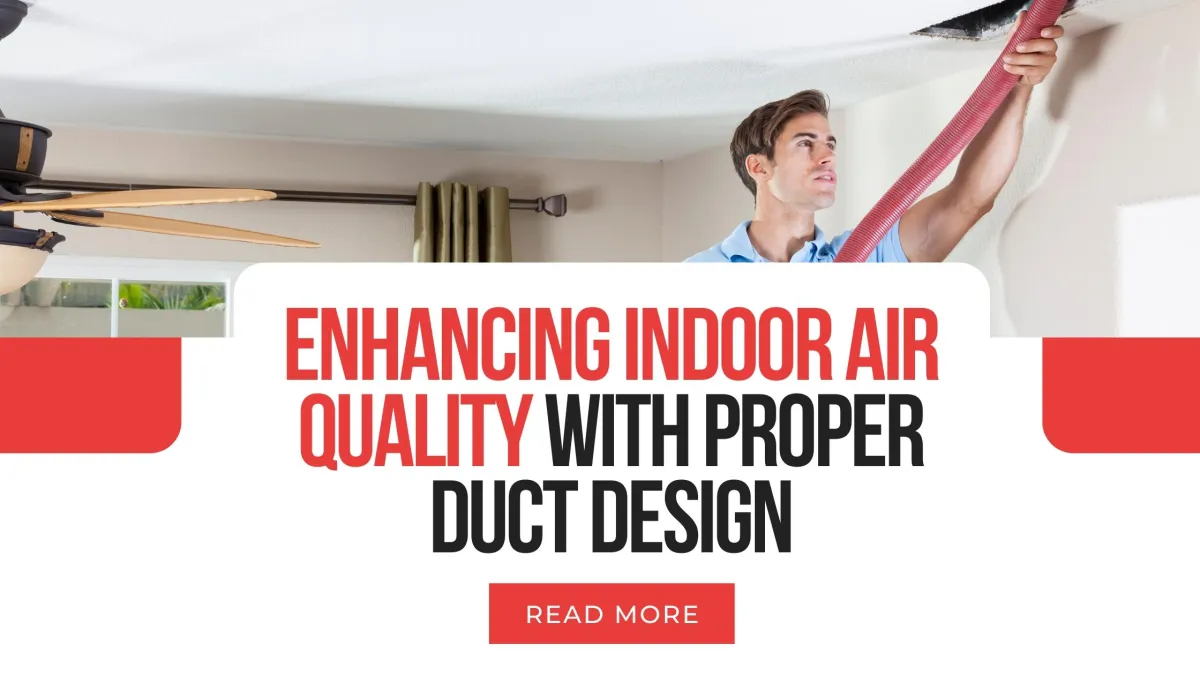Duct Design News and Tips

Enhancing Indoor Air Quality with Proper Duct Design
Indoor air quality has become a hot topic in recent years, and for good reason! Poor air quality can lead to a host of health issues, from allergies to respiratory problems. One of the key players in achieving better indoor air quality is often overlooked: duct design. In this article, we'll explore how well-designed ducts, regular maintenance, and effective air filtration can significantly improve the air you breathe at home or in the office. Let’s dive in!

The Role of Duct Design in Indoor Air Quality
Ductwork is like the circulatory system of your home’s HVAC system. When it’s designed properly, it can efficiently distribute conditioned air throughout your space. But if it’s poorly designed, it can cause all sorts of problems. Think about it—if your ducts are too small, too long, or improperly sealed, you could end up with uneven airflow, inefficiency, and a breeding ground for allergens.
Key Benefits of Proper Duct Design:
Efficient Airflow: Properly designed ducts ensure that air flows evenly throughout your space, preventing areas of stagnation where pollutants can gather.
Reduced Contaminants: Well-sealed ducts keep dust, pollen, and other allergens from entering the air you breathe. This is especially important for sensitive individuals.
Energy Efficiency: A well-designed duct system minimizes air loss, which can lower your energy bills and keep your home comfortable without overworking your HVAC system.
Regular Maintenance: A Must for Cleaner Air
Even the best duct designs need some TLC! Regular maintenance is crucial to ensure that your ducts remain clean and efficient. Over time, dust and dirt can accumulate, which not only diminishes airflow but can also introduce harmful particles into your indoor environment.
Here are some handy maintenance tips:
Schedule Annual Duct Cleanings: Regular cleanings can help remove the buildup of dirt and debris, keeping your system running smoothly.
Inspect for Leaks: Check your ducts for any gaps that might allow pollutants to enter the system. Sealing these leaks can make a big difference!
Replace Air Filters Regularly: A clogged air filter can hinder airflow and reduce filtration efficiency. Aim to replace them every 1-3 months for optimal performance.

The Importance of Air Filtration
Let’s talk about air filtration—this is where things get really interesting! Air filters are your first line of defense against harmful particles in the air. They capture allergens and pollutants, preventing them from circulating through your home. But not all filters are created equal. High-efficiency filters, like HEPA filters, are specifically designed to trap even the tiniest particles.
Here’s how to choose the right filter:
HEPA Filters: These are fantastic for households with pets or anyone suffering from allergies, as they capture a broad range of allergens.
MERV Ratings: Look for filters with a higher Minimum Efficiency Reporting Value (MERV). Higher ratings mean better filtration.
Regular Replacement: Don’t forget—filters lose their effectiveness when clogged, so keep an eye on them and replace them as needed.
Duct Insulation: A Hidden Hero
Now, let’s shed some light on duct insulation, often the unsung hero in the battle for better indoor air quality. Proper insulation is crucial for preventing condensation in your ducts, which can lead to mold growth—a significant indoor air pollutant that can affect your health.

Benefits of Duct Insulation:
Prevents Mold Growth: Keeping ducts insulated helps control condensation, which in turn minimizes the risk of mold.
Energy Savings: Insulation helps maintain the temperature of the air traveling through the ducts, reducing energy loss and improving efficiency.
Improved Comfort: Properly insulated ducts can help eliminate hot or cold spots in your home, providing a more consistent and comfortable indoor environment.
Conclusion
In summary, enhancing indoor air quality is a multifaceted approach that starts with well-designed ducts, effective air filtration, and proper duct insulation. By investing in these elements and committing to regular maintenance, you can significantly reduce allergens and pollutants in your indoor environment, leading to healthier living spaces. Whether you’re building a new home or looking to improve your existing HVAC system, taking the time to focus on duct design can pay off in a big way for your health and comfort.
Ready for Your Solution?
